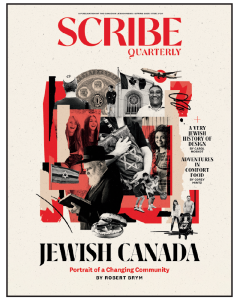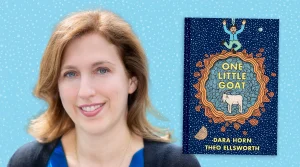After graduating from the Anne and Max Tanenbaum Community Hebrew Academy of Toronto (TanenbaumCHAT), I spent a year studying in Israel before enrolling at York University. While studying at York and later while teaching, I lived in my parents’ home. I moved out of their house on my wedding day.
My story is shared by a majority of my peers. At the time when I graduated high school, most of my peers remained in Toronto for university – going to either York University or the University of Toronto – and most lived at home.
In part, this sociological trend inculcated the religious conservatism of our Jewish community. While living at home, we did Jewish just as our parents did. We went to shul – or didn’t – as they did. We had Shabbat dinner – or didn’t – as they did. We kept kosher – or didn’t – as they did.
In contrast, the American Jewish community’s mobility starts with high school graduation. Students go away to college, living in dorms and renting apartments, affiliating with Hillel, Chabad or nothing. After graduation, they often move elsewhere, as jobs take them to new cities and communities. To some degree, this nomadism has led to a distancing from Jewish community and family. To some degree, it has also led to a religious dynamism and creativity found in hub cities such as New York, Los Angeles, Boston and Chicago.
The trends are changing in Toronto. While most of my peers stayed in Toronto, today a significant proportion of Jewish high school graduates are going to universities in other parts of southern Ontario – Western, Queen's, McMaster, Guelph, Waterloo, etc. When they return to Toronto – and unlike Americans, the vast majority do return to their home city – many live outside of their parents’ home. They are moving to the Annex, the West End, Yonge Street and Eglinton Avenue, Kensington Market and other areas. The impact of these changes in living arrangements is compounded by a trend toward marrying and having children later in life.
The term “emerging adulthood” was introduced by psychologist Jeffrey Arnett in the early 2000s. Citing trends similar to those we’re starting to see here, Arnett argues that a new stage in life between adolescence and adulthood has developed. Emerging adults are often at a stage of life when they are asking big questions, searching for a job, a partner and meaning.
The changing patterns of Toronto’s Jewish emerging adults represent both an opportunity and a challenge.
The opportunity is an openness to create new Jewish activities that are compelling to this market – new programs, new forms of engagement and new role models. Hillels have often served as crucibles for experimentation, allowing safe space for new ways for emerging adults to relate to their Judaism. Out of Hillels have emerged social justice campaigns, new types of prayer and Jewish study.
The challenge will be for us to create the infrastructure required to support and incubate these new forms of engagement. The Toronto community is well equipped for traditional forms of engagement up and down Bathurst Street – with outposts at York, U of T and now Ryerson University. In order to truly serve the needs of Toronto’s emerging adults, we’ll need to stretch beyond our historical boundaries – offering services on university campuses that have often been underserved, creating the human and physical infrastructure in areas of town that haven’t historically had a Jewish presence, and re-thinking the kinds of programs, activities and individuals that will engage these Jews.
When my peers and I graduated high school, our path forward was clear and many of us followed the same direction. Today, as the choice of university continues to broaden and the paths young people take after graduation continue to diversify, so too do the Jewish pathways chosen by emerging adults broaden. As a community, we have an obligation to develop the strategies and infrastructures required to ensure that these new pathways are infused, throughout, with Jewish choices.






